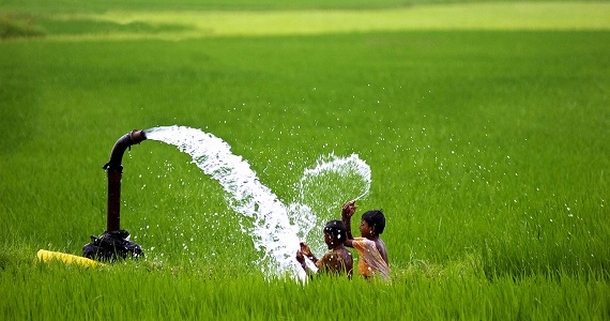India’s new climate-smart cash crop – Triple win for nation and its farmers

The farmers in Gujarat seems to be a little relieved to know that they have something else to sell when they don’t enough crop or going through a dry phase. This year, Gujaraat farmers were able to sell the excess electricity generated by solar panels installed to run the tube-wells and water pumps.
One of such farmers, Ramanbhai Parmar, sold 1,500 kilowatt hours of excess electricity his solar installation had generated during past four months. He earned 7,500 INR ($120.) Earlier, the state was facing a trouble as farmers used free solar energy to extract excess amounts of water. That was leading to wastage of water and rapid depletion of groundwater.
Now, as the farmers are able to sell additional electricity generation, they only extract as much water as they require to irrigate crops in order save electricity. Earlier, the solar panels meant free electricity for farmers so they took advantage of it and their tube-wells and water pumps used to run almost 24×7.
This pioneering project was brought to India by Sri Lanka-based non-profit International Water Management Institute (IWMI).
In a statement, Tushaar Shah, IWMI senior fellow said:
Solar crops’ are a very exciting example of a triple-win. Farmers, the state, and precious water reserves all benefit from a single intervention. We know that India’s farmers are extremely responsive to incentives that improve productivity and incomes. By offering them the chance to sell the electricity generated by their solar-powered water pumps, we could make agriculture in India cleaner and green.
This solution has not only helped preventing extraction of excess water, but is also supplying green energy to grids, and let farmers earn handsome money in exchange for it. So, it is a win-win situation for all. Even at the time of drought, farmers have something to offer for money.
Gujarat is one of the sunniest regions in India and it receives 3, 000 hours of sunlight annually. Therefore, this project has proved to be a success here.
Not just earning, but solar-power is the true answer to remote areas of India where people don’t have excess to electricity yet. About 33% of India’s household was reported to have lacked access to electricity according to the 2011 census.
In terms of India’s concern and awareness regarding climate change and depletion of natural energy and water resources, the nation is almost illiterate. Water crisis are looming over India and energy consumption is on rise. Climate change is hitting crops, as it happened in the beginning of the year due to unseasonal rains.
Farmers were the most hit and so was the Indian agrarian industry. The effects of climate change are disastrous for Indian agrarian productivity. More than that, it’ll be a nightmare for India’s poverty stricken farmers. The suicide rate had reached an alarming level in the first quarter of this year after many farmers were left in lurch after unseasonal rains damaged most of their crops.
Further, according to a report by Indian government in 2013, about half of total 445 rivers in India were too pollutted for drinking purpose. Water from many of these rivers asks for expensive treatment before it could be re-used.
Moreover, Indian Supreme Court had already slammed the government for its failure to clean Ganges River.


